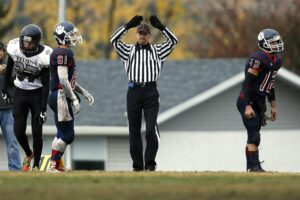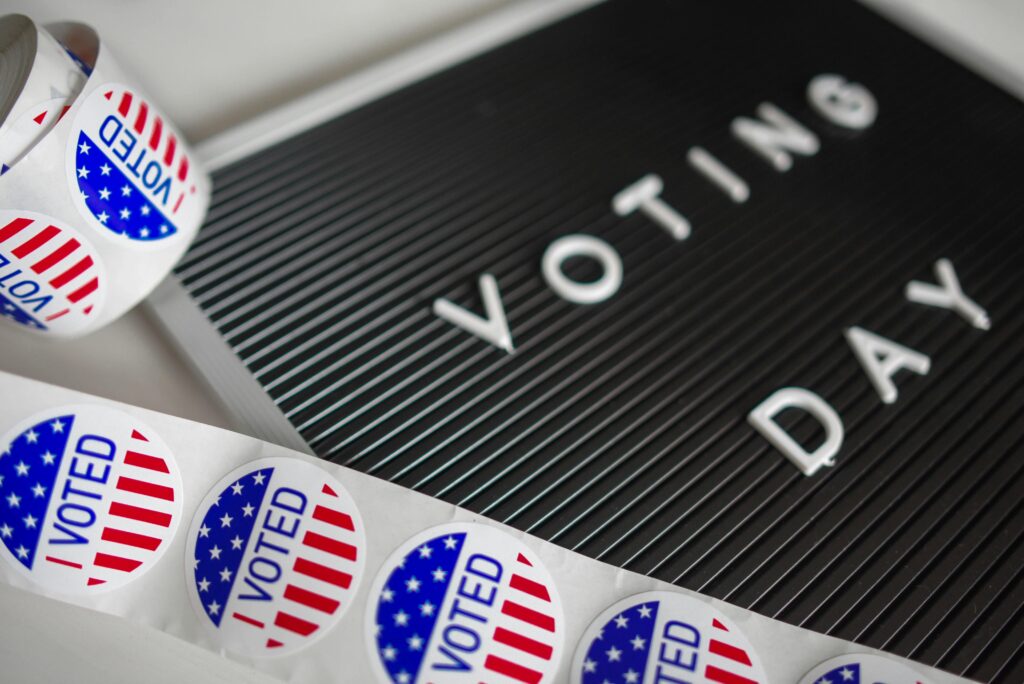15 Wake Forest L. Rev. Online 25
Trinity J. Chapman
“The family, that dear octopus from whose tentacles we never quite escape, nor in our innermost hearts never quite wish to.”
– Dodie Smith, Dear Octopus.
Introduction
“The first bond of society is marriage; next, children; and then the family.”[1] There is no doubt that the face of the modern American family has changed drastically over the past fifty years. As family structures and social norms have changed, so too has the law evolved to reflect this transformation. Today’s reality is that some children—whether by design or circumstance—are being raised by three parents. To best serve North Carolina’s children and families, the state should adopt a statute allowing a child to have three legal parents.
I. Landscape of the Modern American Family
A statute providing for the possibility of three parents would be the legal recognition of an existing reality. The structure of society, types of families, and methods of family formation have evolved greatly in the past century.[2]
Fifty years ago, the word “family” might have evoked ideas of a household comprised of a mother and father, married to each other, and one or more biological children. And while this description always failed to capture the reality of many family structures, the landscape today is even more varied. Recent data shows that only 46 percent of children in the United States live in households comprised of two married parents in their first marriages.[3] Eight percent of American and North Carolinian children live with unmarried, cohabitating parents.[4] Nearly 24 million children (34 percent) live in single-parent households.[5] Most of these children (14.5 million) live in single-mother households, while 3.5 million live in single-father households.[6] In North Carolina, the number of children living in single-parent homes is higher than the national average; 36 percent of children live with a single parent.[7] Five percent of the nation’s children––and 6 percent of North Carolina’s children––reside with neither parent.[8] Further, 4 percent of children nationwide and 4 percent of North Carolinian children reside in the care of their grandparents.[9]
Family formation is also changing.[10] Today, one out of every twenty-five American families has adopted a child, and there are approximately 4.5 million adopted children nationwide.[11] In addition to adoption, the number of children conceived through assisted reproductive technology (ART) is on the rise. In 2019, 83,946 children were born who were conceived through ART.[12]
Even decades ago, any notion of a “traditional” American family was illusory. But today, such a notion could not be further from the truth. “[T]here is no longer one dominant family form in the U.S.”[13] The panoply of American families is more diverse than ever.
As family has changed in tangible ways, social norms and values have also progressed. Americans have become more accepting of diverse family forms. The majority of Americans now report that “a single parent raising children on their own” is “completely acceptable.”[14] A majority of Americans also deem same-sex couples who choose to raise children together to be either “completely acceptable” or “somewhat acceptable.”[15] Moreover, less than half of Americans feel that the declining number of children being raised by two married parents will have a negative societal impact.[16] Only 36 percent believe that fewer people getting married is negative, and only 29 percent believe that an increase in nonmarital cohabitation is negative.[17]
Regarding more controversial ideas, acceptance differs by age. Although most Americans over fifty believe that open marriages, or marriages where “both spouses agree that they can date or have sex with other people” are unacceptable, 51 percent of Americans aged 18–29 find such marriages acceptable.[18] Younger Americans are also more accepting of divorce in reportedly unhappy marriages than their older counterparts.[19] Notably, the strongest predictor of one’s views on family arrangements and forms is one’s own experience.[20] Experience has a greater impact than age, race, religious beliefs, or media.[21] Inasmuch as social norms embody a generational shift, views about nontraditional families are almost sure to become more and more accepting with time, especially as more people experience nontraditional family structures themselves. As such families become increasingly common, more individuals will live in and witness them, and acceptance is likely to grow.
As social norms shift over time, our laws shift too. Perhaps the most notable of such changes took place in 2015, with the recognition of same-sex marriage as a constitutional right in Obergefell v. Hodges.[22] Before the Obergefell decision, same-sex marriage was already legal in thirty-seven states.[23] However, the decade before Obergefell saw a dramatic shift in public opinion and the law surrounding same-sex marriage. In 2003, only twelve years earlier, the Supreme Court in Lawrence v. Texas[24] struck down a Texas statute outlawing consensual same-sex sexual activity.[25] The next year, in 2004, Massachusetts became the first state to legalize same-sex marriage.[26] By 2014, same-sex marriage was legal in North Carolina.[27]
In 2004, only 31 percent of Americans were in favor of its legalization.[28] By 2019, the number had risen to 61 percent.[29] With the nationwide legalization of same-sex marriage, the American law, ever adaptable, evolved once more to reflect the changing values of its society.
The same concept should apply with regard to non-traditional parenting arrangements. As Americans—and particularly young Americans—change their views on and become more accepting of diverse family structures, the law should shift to embrace, or at least acknowledge and accommodate, the increasingly varied families that make up our nation.
II. Counting up from Zero
Numerous situations exist in which a legal option to recognize more than two parents would be beneficial. The 1989 case of Michael H. v. Gerald D.[30] provides a quintessential example. There, Carole D. and Gerald D. were a married couple.[31] Carole became pregnant after an affair with Michael H.[32] The child, Victoria, was born while Carole and Gerald were still married.[33] Gerald held himself out as Victoria’s father, and Victoria’s birth certificate listed Gerald as her father.[34] Still, shortly after giving birth, Carole informed Michael that he might be Victoria’s biological father.[35]
During the first three years of Victoria’s life, she and Carole lived in several different family arrangements.[36] Gerald moved to New York, while Carole and Victoria remained in California and lived with Michael.[37] During that time, Carole and Michael obtained a paternity test, which revealed a “98.07% probability that Michael was Victoria’s father.”[38] The next year, Carole visited Michael in St. Thomas, where Michael held Victoria out as his child.[39] Two months later, Carole and Victoria returned to California to live with a man named Scott.[40] The same year, Carole and Victoria spent time with Gerald in New York and vacationed with him in Europe, but later returned to California to live with Scott.[41] By this time, both Gerald and Michael had formed quasi-parental connections with Victoria.[42]
Problems arose when Michael attempted to visit Victoria.[43] Carole rejected these attempts, and Michael filed a petition for visitation and to be adjudicated as Victoria’s father, claiming under substantive due process that “he ha[d] a constitutionally protected ‘liberty’ interest in the relationship he ha[d] established with Victoria.”[44] Victoria, through her appointed guardian ad litem, filed a due process claim asserting that “if she had more than one psychological or de facto father, she was entitled to maintain her filial relationship, with all of the attendant rights, duties, and obligations, with both.”[45] Victoria claimed that her equal protection rights had been violated “because she had no opportunity to rebut the presumption of her legitimacy.”[46]
During the pendency of the case, Carole and Victoria first resided with Gerald, moved to live with Michael, and then moved to again live with Gerald.[47] Gerald and Carole proceeded to have two more children.[48]
Gerald intervened in the action, asserting that no issue existed as to Victoria’s paternity since he was entitled to the marital presumption.[49] Ultimately, the Supreme Court acknowledged that Michael was Victoria’s biological father, but held that California’s marital presumption law was not unconstitutional and maintained that Gerald was Victoria’s legal father.[50] The Court went on to reject Victoria’s claim that she had a due process right to maintain relationships with both Gerald and Michael, remarking “the claim that a State must recognize multiple fatherhood has no support in the history or traditions of this country.”[51]
The Court’s holding might seem like a strange result. Victoria had lived with and formed filial relationships with both men.[52] As her guardian ad litem asserted, she stood to reap psychological benefits from both relationships.[53] Recognizing both Michael and Gerald as legal parents would have ensured Victoria’s continued relationship with both men. Yet, relying on an apparent lack of tradition, the Court dismissed Michael’s substantive due process claim and Victoria’s due process and equal protection claims.
While there may have been a lack of tradition for “multiple fatherhood” in 1989, the diversification of family forms in the following thirty-six years has established such tradition. Given the ever-increasing prevalence of non-traditional cohabitation and family arrangements in the three decades since Michael H.,[54] the argument that multiple parenthood lacks legal or cultural grounding has weakened.
Today, multiple parenthood is recognized not only through real-life family structures but also by the law. In 2013, a Florida court approved an adoption by three parents.[55] There, two women conceived a child through sperm donated by a male friend.[56] The sperm donation came after an informal, verbal agreement between the three.[57] However, just before the girl’s birth, the donor decided that he hoped to play a larger role in the girl’s life—rather than merely being a donor, he wanted to be a legal parent.[58] After a lengthy legal battle, the court agreed to make both women and the man the girl’s parents.[59]
In Alaska, a judge approved a child’s adoption by two additional parents without terminating the existing mother’s parental rights.[60] The mother, who was terminally ill, sought adoptive parents for her child but did not wish to relinquish her own rights while she remained alive.[61]
In D.G. v. K.S.,[62] the Superior Court of New Jersey deemed one individual to be a child’s “psychological parent” after three individuals entered into a unique agreement to parent a child together.[63] Each of the three parties took a role in parenting and childcare duties, and the arrangement worked until K.S. wished to relocate with the child.[64] Following a contentious custody battle, the court ultimately divided custody and financial responsibility for the child among the three parties.[65] Although the court was “particularly sympathetic” to S.H.’s attempt to establish legal parentage, it noted that a “‘tri-parenting model’ with three legal parents is supported neither by the statute at hand nor the case law.”[66] Underscoring the potential and need for change, the court remarked that “[a] statutory change is best left to the Legislature, as such change demonstrates a ‘social policy choice,’ not a constitutional question.”[67]
In Dawn M. v. Michael M.,[68] a New York Supreme Court case, a married couple in a romantic relationship with another individual, A, decided to conceive a child together, with Michael and A being the biological parents of the child.[69] Eventually, the relationship became strained, leading to the couple’s divorce. Dawn and A then moved out, bringing the child with them.[70] Custody orders contemplated primary custody with A and liberal visitation by Michael.[71] Dawn sought to ensure her continued relationship with the child.[72] In considering the possibility of a tri-parenting agreement, the court noted that the child was “a well-adjusted ten-year-old boy who loves his father and his two mothers.”[73] During an in-camera session, the child disclosed that he would be “devastated if he were not able to see [Dawn].”[74] Determining that it was in the child’s best interest, the court ultimately ordered a tri-parenting custody agreement.[75]
Three-parent options have provided solutions in circumstances like those described above. But such an option is hardly limited to these circumstances. As more diverse family structures continue to become commonplace, a three-parent option might provide solutions in the following hypothetical situations:
- A and B marry and conceive Child. The couple divorces. Both parents continue to play an active role in Child’s life and upbringing. Later, A remarries. Stepfather also plays an active parental role in Child’s life. A becomes ill, and Stepfather hopes to continue to play a role in Child’s life in the event of A’s death. A, B, and Stepfather all want Stepfather to be recognized as a parent, but neither A nor B want to relinquish their parental rights.
- D and E, two women, are married and hope to conceive a child through assisted reproduction. Their close friend, F, agrees to serve as a sperm donor. D, E, and F all agree that they would like F to play a parental role in Child’s life, and F wants to ensure that his rights as a parent will be protected.
- G, H, and J are together in a polyamorous relationship. G and H conceive a biological child with the expectation that G, H, and J will raise the child together. The child is born, and J takes an active paternal role in Child’s life. Child regards G, H, and J as parents.
- K and L are Child’s biological parents. K and L are unable to successfully parent as they are experiencing drug addiction, and K’s parents, Grandmother and Grandfather, serve as Child’s primary caregivers. L’s parental rights are terminated, but K recovers and continues to play a secondary parental role in Child’s life. Grandmother and Grandfather, hoping to ensure stability for Child, seek to adopt him. Still, neither grandparent nor Child hopes to terminate K’s rights.
- M and her husband, N, hope to conceive a biological child. However, M has a mitochondrial disease. Using in vitro fertilization, M and N combine DNA from M’s egg, N’s sperm, and mitochondrial DNA from O. M, N, and O all agree to take an active role in parenting the child. Child is born and has three biological parents.
- P and Q marry, have two children, and divorce. P remarries R. R, P, and Q all play active parental roles in the children’s lives. After several years, R hopes to be recognized as a legal parent, and P and Q agree that this is a good idea.
- R and S marry and have two children, T and U. R and S divorce, and S marries V. V adopts T and U. The court does not terminate R’s parental rights. R dies intestate.[76]
III. Other States’ Laws
Understanding the paths to a three-parent option in North Carolina begins with an understanding of how other states have handled the issue. At least ten other states have already embraced the idea that a child may have more than two legal parents through legislation or published case law.[77]
- California: California allows for multi-parent custody arrangements. In addition, California’s Family Code explicitly states that a court may “find that more than two persons are parents . . . if the court finds that recognizing only two parents would be detrimental to the child.”[78]
- Connecticut: Connecticut law provides that “the court may adjudicate a child to have more than two parents.”[79]
- Delaware: Delaware adopted the newest version of the Uniform Parentage Act, which provides for a three-parent option.[80]
- Louisiana: Louisiana allows multiple fatherhood. It allows a petitioner to “institute an action to prove paternity even if the child is presumed to be the child of another man.”[81]
- New Jersey: In D.G. v. K.S., New Jersey recognized that a child had two legal parents and an equitable parent.[82]
- North Dakota: In McAllister v. McAllister,[83] the court granted visitation rights and “parental rights” to a third parent under the doctrine of psychological parenthood.[84]
- Maine: Maine’s Parentage Act states that “a court may determine that a child has more than two parents.”[85] It also provides clear avenues to de facto parenthood.[86]
- Minnesota: The Minnesota Supreme Court approved a tripartite custody arrangement.[87]
- Pennsylvania: Pennsylvania courts have acknowledged the possibility of a three-parent child support order.[88]
- Washington: Washington adopted the newest version of the Uniform Parentage Act, which provides for a three-parent option.[89]
- Vermont: The Vermont Parentage Code contemplates the possibility of more than two parents.[90]
Other Countries:
- Canada: Ontario, Canada has recognized that a child may have three parents.[91]
- Brazil: Brazil recognizes the possibility of multiple fatherhood.[92] Further, it allowed a three-parent birth certificate with the names of two married women and their child’s biological father.[93]
- Argentina: Where a same-sex couple and biological parent were involved, Argentina allowed all three to be listed on the child’s birth certificate.[94]
IV. Equitable and Legal Parenthood
As it stands, there are two viable paths to the recognition of three parents: (1) a statutory option and (2) through the operation of equitable parenthood doctrines. Both pathways have been used successfully, but a statutory option is preferable because of the certainty and clarity it could provide. Still, North Carolina families could benefit from either approach.
A. Equitable vs Legal Parents
Notably, while some of the statutes and case law discussed above provide for three legal parents, others only allow for three equitable parents.[95]
Equitable parenthood doctrines evolved out of necessity. Traditionally, legal parent status has hinged upon either biology, marriage, or adoption.[96] Status as a “formal legal parent” carries with it all the traditional notions, rights, and responsibilities of parenthood.[97] Still, for some––particularly same-sex couples before nationwide marriage equality––legal parenthood produced “harsh results.”[98] In families with same-sex parents, at most one of those parents was the biological parent of the child.[99] In pre-Obergefell America, same-sex marriage was often off the table.[100] Adoption of the child by the non-biological parent, while possible, remained a difficult and expensive option for some couples.[101] When these couples split up, the lack of available legal status created uncertain results that had the potential to harm children by removing their access to individuals whom they knew and understood as parents.[102]
To combat this result, some courts turned to “equitable parenthood” doctrines like de facto parentage, psychological parentage, in loco parentis, and parenthood by estoppel.[103] Though the rights of individuals with these statuses vary by jurisdiction, equitable parenthood doctrines typically provide some of the rights and responsibilities of parenthood and place parties in stronger positions to seek visitation and/or custody.[104]
B. Legal Parenthood as a Better Option
Legal parenthood is preferable to equitable parenthood doctrines for two reasons. First, legal parenthood provides greater stability and certainty to families. Second, denying parents in non-traditional family structures the status of legal parenthood relegates them to a lesser status and unjustly denies their access to the privileges and benefits of parenthood enjoyed by more traditional families.
Equitable parenthood, though not ideal, remains a viable and perhaps more attainable alternative. North Carolina has already recognized equitable parenthood,[105] and extending this recognition to multiple parents in the exceptional cases that warrant it would be less of a stretch.
In the 2008 case of Mason v. Dwinnell,[106] the North Carolina Court of Appeals recognized the existence of a psychological parent.[107] There, Dwinnell appealed after the trial court granted shared custody of her child to her and her former domestic partner, Mason.[108] Both women, Dwinell was the child’s biological parent, and Mason was neither a biological nor legal parent.[109] However, Mason and Dwinnell planned and conceived the child together and gave the child both of their surnames, naming him Mason Dwinnell.[110] They shared caretaking responsibilities for the child.[111] When the couple split up, the trial court awarded Mason joint custody because her involvement in the child’s life made her a psychological parent.[112] The North Carolina Court of Appeals affirmed.[113]
Despite this early case, North Carolina’s case law on psychological parenthood is meager. Some North Carolinians are hostile to the doctrine. The North Carolina Family Policy Council, for example, published an article arguing against de facto parenthood and provided the following hypothetical.[114]
Imagine this scenario: You and your husband are married and have a child named Jane. Five years into the marriage, your husband leaves and moves in with Nancy, his new girlfriend. He files for divorce and gains joint custody of Jane. Your husband and Nancy live together for three years, but never marry. Nancy assumes a number of parental responsibilities, including providing childcare for Jane. Your now ex-husband and Nancy split up, but Nancy misses Jane. She goes to court and gets joint custody over the objections of both you and your ex-husband.[115]
What opponents fail to understand, however, is that this scenario would almost certainly not result in the court deeming Nancy a de facto parent. De facto parenthood doctrines require some type of “holding-out,” meaning that the party seeking de facto parenthood must “present[] the child to others” as their own.[116] In addition, most approaches to de facto parenthood require that any parent-child relationship established between a petitioner and a child must have been formed with the consent of the legal parent.[117]
For example, under the American Law Institute’s Principles of the Law of Family Dissolution, an individual may qualify for de facto parenthood if he (1) lives with the child, (2) has formed a parent-child relationship with the agreement of the legal parent, and (3) performs the majority, or as much, caretaking as the legal parent.[118]
Currently, North Carolina follows a test for psychological or de facto parenthood that requires that the legal parent “ch[ose] to cede [to the petitioner] a sufficiently significant amount of parental responsibility and decision-making authority to create a permanent parent-like relationship with her child” and considers (1) whether there was a parent-child bond; (2) the child’s attachment to the petitioner; (3) the “parent-like duties and responsibilities” that petitioner assumed; (4) whether petitioner provided financial support for the child; (5) whether the petitioner was “viewed as a co-parent by family and friends”; (6) whether the child views petitioner as one of its parents; (7) whether the petitioner “engaged in ‘any conduct inconsistent with her claim to exclusive control of the children’”; and (8) whether petitioner was viewed as a co-parent by “professionals and medical providers.”[119]
North Carolina family courts understand the importance of stability in children’s lives.[120] By allowing for the possibility that a child may maintain a relationship with an individual who has served as a parent in her life, de facto parenthood doctrines work, to an extent, to enhance stability. Still, while equitable parenthood is an option for North Carolina families, it is generally disfavored by courts, and only three published North Carolina cases discuss it.[121] Thus, while equitable parenthood may serve as a tool in some three-parent situations, the general uncertainty of the doctrine in North Carolina makes it a worse option than legal parenthood. Further, given the necessity of litigation in establishing equitable parenthood, the doctrine might be cost-prohibitive for some individuals and families. In addition, given that the legal status of equitable parents varies by jurisdiction and is often a judicial creation, it is subject to the vagaries and uncertainties of common law. For all of these reasons, equitable parenthood is less ideal than legal parenthood.
Second, legal parenthood is preferable because the gravity of the legal status communicates to both parents and children about the integrity of their families. In Obergefell, the Supreme Court recognized the power and impact of legal status on individuals’ perception. Justice Kennedy remarked that, by virtue of “their exclusion from [the] institution [of marriage], . . . same-sex couples [were] consigned to an instability many opposite-sex couples would deem intolerable in their own lives.”[122] Same-sex couples sought marriage equality not in an attempt to demean the institution of marriage; rather, their desire to participate in the institution was a demonstration of their respect for it.[123]
Regarding the children of same-sex parents, Justice Kennedy opined that, “[b]y giving recognition and legal structure to their parents’ relationships, marriage allows children ‘to understand the integrity and closeness of their own family and its concord with other families in their community and in their daily lives.’”[124] While same-sex couples in some states had access to marriage-like regimes, such as domestic partnerships, civil unions, and reciprocal benefit agreements, these doctrines did little to make up for the reality that these individuals, many of whom desired to participate in the time-honored tradition of marriage, were denied that opportunity.
The same paradigm applies to non-traditional parenthood. In the history of our nation, perhaps no legal status besides marriage is so respected and honored as parenthood.[125] Parents in multi-parenting arrangements––and the children being raised in these arrangements––should enjoy the “recognition, stability, and predictability” provided by legal parenthood.[126] Refusing legal recognition for the reality that multi-parent families exist “relegate[s] [these children] through no fault of their own to a more difficult and uncertain family life.”[127] This is wrong. Children raised by more than two parents deserve the stability and certainty of legal parenthood. To relegate third parents who seek official, legal status and their children to a lesser, semiliquid doctrinal status denies them this certainty. Recognizing legal multi-parenthood would serve North Carolina’s longstanding policy of advancing children’s best interests. There is value in a child being able to point to an individual and say, with certainty, that “she is my mom” or “he is my dad.”
V. Three Biological Parents
With the rapid advance of assisted reproductive technologies, the idea of a child with three biological parents is no longer a far-off notion from science fiction; it has already happened.[128] Typically, sperm and egg donors involved in the ART process seek to ensure that they will not have any of the legal rights or responsibilities of parenthood. Though infrequent, an increasing number of ART agreements seek the legal recognition of three parents, all of whom were “involved in the child’s creation and/or the parenting process.”[129]
Today, three-parent families are both a social and biological reality. Notwithstanding the strong social and societal arguments for a three-parent option, the fact that it is already a scientific reality should be enough to warrant legislative recognition.[130]
VI. The Best Interest of the Child (and the State)
Perhaps the strongest argument for the legal recognition of three parents in North Carolina is that, in many cases, it would serve the best interest of the child.
The best interest of the child is the gold standard in family courts across the United States, including in North Carolina.[131] When family courts are tasked with making major decisions about children’s lives, they turn to an evaluation of what would be in the child’s (and not the adult’s) best interest.[132] In Price v. Howard,[133] the North Carolina Supreme Court considered the meaningful parenting role that the petitioner had played in the child’s life and held that he was likely tantamount to a natural parent, such that the child’s best interest favored him retaining custody.[134] Similarly, in In re Montgomery,[135] the court evaluated the best interest of the child in determining whether a parent’s rights should be terminated.[136] It emphasized that “the best interest of the child is the polar star” guiding “North Carolina’s approach to controversies involving child . . . custody.”[137]
Having a third parent also offers a more practical social safety net for children in those situations. In a situation where two other parents are unwilling or unable to care for a child, a third parent could make the difference between a child remaining in parental care or entering foster care.
For children who grow up in family arrangements with three parents, there is no doubt that a legal, formal recognition of these relationships would be in their best interest in at least some instances. Legal parenthood for third parents could provide stability and security for children and their parents—children could have the confidence and security of knowing who their parents are, and parents would have the comfort of ensuring their continued rights to the care and custody of their children.
Legal recognition of a three-parent option would also lessen the financial burden on North Carolina and its taxpayers. As seen in Jacob v. Schultz-Jacob,[138] a third parental figure can be someone whom the state looks to for support.[139] Having multiple sources of support for a child is not only beneficial for the child, but also for the state. Social welfare programs that support children and families are absolutely necessary, but they are also expensive. In 2021, North Carolina spent $554 million on the Temporary Assistance for Needy Families (TANF) program.[140] In 2023, the state’s budget for its Special Supplemental Nutrition Program for Women, Infants, and Children (WIC) was $191 million.[141] Further, North Carolina spent over $21 million on Medicaid in 2023, with some of this total going to find medical care for children.[142] Unlike these programs and others like them, formal child support is unique in that it “enforces the private transfer of income from parents who do not live with their children to the household where the children live” rather than “transfer[ring] public funds to families as most social welfare programs do.”[143] In addition to formal child support orders, informal support from more than two parents would be beneficial in some cases. In 2017, the cost of raising a child born in 2015 was estimated to be $233,610.[144] In 2025, this number is even higher. Undoubtedly, the number of families who would exercise a three-parent option would be very small. Still, if three parental figures are all willing to contribute to a child’s financial support and well-being, the state would be well-served to encourage that. Recognizing three parents might also open some of the “constellation of benefits” conferred on parents and children, like life and health insurance benefits. Thus, allowing for three parents would not only be in the best interest of children but also the best financial interest of the State of North Carolina.
VII. How Many Is Too Many? Attachment & Best Interest
Another way in which a multi-parent option would serve the best interests of children and society is through the stability and encouragement it would provide to significant attachment relationships. In some situations, allowing for three parents may help bolster a child’s psychological health throughout childhood and into adulthood. A child’s attachment to their caregivers is an essential aspect of healthy development.[145] Attachment is a relationship between child and caregiver that is “involved with making the child safe, secure and protected.”[146] Attachment is present where the child “uses the primary caregiver as a secure base from which to explore and, when necessary, as a haven of safety and a source of comfort.”[147] Secure attachments act as a “protective factor against social and emotional maladjustment,” while disorganized attachment is “a powerful predictor for serious psychopathy and maladjustment in children.”[148] As they age, many children with disorganized attachment in infancy struggle in school, both academically and socially.[149] Adolescents who experienced disorganized attachment have higher levels of psychopathy and struggle with self-regulation.[150] In young adulthood, these individuals are more vulnerable to dysfunctional mental processes such as dissociation.[151] Overall, attachment during childhood influences not only one’s inner, mental experience but also her future interactions with her peers and with society.[152]
Notably, children are not limited to a single secure attachment. Attachment is defined, in part, as an “emotional bond that emerges between an infant and one or a few significant adult caregivers.”[153] Attachment literature supports the notion that a child may have more than two significant attachment relationships.[154] However, these relationships are not limitless, and many caregivers do not rise to the level of “attachment figures” in a child’s life.
Secure attachments unquestionably serve a child’s best interests. Accordingly, following the best interest of the child legal standard, North Carolina family courts have already recognized the importance of attachment in a child’s life.[155] Of course, recognition of more than two legal parents would not be appropriate in all situations, even those where a child is securely attached to more than two adults.[156] Still, since the law purports to promote a child’s best interests, in situations where the circumstances are right, the law should allow for legal recognition of more than two parents. Providing a legal avenue through which a parental figure’s relationship can be legally sanctioned encourages the continuity of the parent’s relationship with the child. Given the substantial individual and societal harm that can stem from a child without appropriate attachment relationships, the law should strive to promote potentially positive attachment relationships.
VIII. Three Parents and Family Privacy
North Carolina children and families would be well-served by a statutory option providing for the recognition of three parents. The law must evolve to fit more diverse and ever-changing family structures and social norms. However, acknowledging the situations in which judges have recognized the possibility of three legal parents might evoke a number of reactions. On one hand, the situations reflect complicated, and often tumultuous relationships among adults. For some, it might be difficult not to react negatively, with the sense that situations such as these provide for non-ideal family dynamics, confusing environments, and overall negative impacts on children. For them, a codified three-parent option would be the legal ratification of an unfortunate societal ill. These arguments, while understandable on their face, fall short. Still, it is worth examining them.
First, the idea that a better environment or better family could have been achieved is far from unreasonable. Examining the above cases prompts reflection on whether better choices might have been made by those involved. At times, a more legally reasoned approach from the outlook might have avoided a three-parent custody battle. For example, in the Florida case,[157] the parties would have been well-served by a formal assisted reproduction contract drafted by a lawyer.[158] And yet, the reality stands that these unique situations do occur––and with increasing frequency.[159]
The law recognizes that family situations are often far from ideal. Marriage rarely occurs in contemplation of divorce, for example, and divorce is far from an ideal outcome. But the law, to meet people’s needs, must still provide an avenue through which to exercise personal autonomy and end marriages. The same logic applies to parental relationships. Though it might reflect family structures that some find less than ideal, allowing a three-parent option would enable personal autonomy and give people the capacity to make family decisions that best suit them. In Troxel v. Granville,[160] the Supreme Court opined that “our world is far from perfect.”[161] Noting that “there is normally no reason for the State to inject itself into the private realm of the family,” the Court struck down an overly permissive visitation statute that would have allowed family courts to substitute their judgment for that of fit parents.[162] Troxel reinforced the idea that the law respects family autonomy.[163] Even if judges or lawmakers might have made a different decision, it is the place of a fit parent—and not of the courts—to decide how to run one’s family.
Any decision about family formation is deeply personal, and the decision to have a three-parent family, whether intentional or through circumstance, is no different. To respect this decision and honor family autonomy aligns with deeply rooted constitutional principles.[164] Three-parent families remain relatively uncommon and undoubtedly might face some prejudice. Still, the law must not give legal recognition to a private prejudice. The Supreme Court echoed that sentiment in Palmore v. Sidoti,[165] where it struck down a lower court’s ruling that a white mother was unfit to have custody of her child based on the perceived social unacceptability of her interracial marriage.[166] It remarked that the law must not “bow[] to the hypothetical effects of private . . . prejudice,” even if that prejudice was “widely and deeply held.”[167] Hypothetical prejudice was not a “permissible consideration[] for removal of an infant child from the custody of its natural mother.”[168] Despite the social disapproval that three-parent families might face, the fact remains that they do exist. Such families should not be denied legal recognition on the grounds of such prejudice.
IX. A Statute for North Carolina
North Carolina should adopt a statute that provides for the possibility of legal recognition of more than two parents.
The Uniform Parentage Act (UPA) provides a valuable template for North Carolina. Section 201 of the UPA provides that a parent-child relationship is established between an individual and a child if:
(1) the individual gives birth to the child [outside the surrogacy context];
(2) the individual is presumed a parent, either through the marital presumption or where “the individual resided in the same household with the child for the first two years of the life of the child, including any period of temporary absence, and openly held out the child as the individual’s child”;
(3) the individual is adjudicated a parent of the child;
(4) the individual adopts the child;
(5) the individual acknowledges parenthood of the child, [unless that acknowledgment is rescinded or successfully challenged];
(7) [the individual is the intended parent of the child according to an assisted reproduction agreement]; and
(8) [the individual is the intended parent of the child according to a surrogacy agreement].[169]
Section 613(a) of the UPA specifically states that “two or more individuals” may establish parenthood.[170]
Given North Carolinians’ understandable concerns about a three-parent option, the legislature might even adopt a provision whereby the family court would only allow for more than two parents where “it would serve the child’s best interests and would be detrimental to the child to refuse to do so.”
Conclusion
As our world and society continue to shift, family law must evolve with it. Such a statute would serve to modernize North Carolina family law in a way that best serves families today. North Carolina values and respects family, and its family laws serve to enhance those policies. A three-parent option would be the legal recognition of the existing reality that some North Carolina children have three parents.
A three-parent option would tailor North Carolina law to best serve all its residents, including those living in nontraditional family forms. It would provide parents with the dignity and security of legal parent status. It would provide financial benefits for children who might not otherwise receive them, serving to further protect the state and taxpayers from the burden of supporting minor children. It would honor North Carolinians’ autonomy and liberty to structure their families and personal lives in the ways that they see fit. And perhaps most importantly, it would serve the best interest of so many children––now and in the future––by providing them the legal protections and security that come along with having legal parents.
At the precipice of an ever-changing family landscape, North Carolina has the opportunity to put aside private bias and prejudice to truly embrace and support families and children.[171] To that end, North Carolina should allow for three legal parents.
Trinity J. Chapman[172]
- . Obergefell v. Hodges, 576 U.S. 644, 657 (2015). ↑
- . James Fletcher Thompson, South Carolina Adoption Law and Practice: A Guide for Attorneys, Certified Investigators, and Families 306–07 (2d ed. 2023). ↑
- . Pew Rsch. Ctr., Parenting in America 15 (2015), https://www.pewresearch.org/wp-content/uploads/sites/20/2015/12/2015-12-17_parenting-in-america_FINAL.pdf. In 1960, by contrast, 73 percent of children lived in households with two married parents in their first marriage. Id. ↑
- . Children Living with Cohabitating Domestic Partners in United States, Annie E. Casey Found.: Kids Count Data Ctr. (2025), https://perma.cc/CLT8-FZMR. ↑
- . Children Living in Single-Parent Families in United States, Annie E. Casey Found.: Kids Count Data Ctr. (2025), https://perma.cc/6RKM-X92J. ↑
- . Child Population by Household Type in United States, Annie E. Casey Found.: Kids Count Data Ctr. (2025), https://perma.cc/L2SW-53ZZ. ↑
- . Children Living in Single-Parent Families in North Carolina, Annie E. Casey Found.: Kids Count Data Ctr. (2025), https://perma.cc/5Z2L-W5PE. ↑
- . Children Living with Neither Parent in North Carolina, Annie E. Casey Found.: Kids Count Data Ctr. (2025), https://perma.cc/C5ND-VXC6. ↑
- . Children in the Care of Grandparents in North Carolina, Annie E. Casey Found.: Kids Count Data Ctr. (2025), https://perma.cc/V6KX-NYAP. ↑
- . Thompson, supra note 2, at 306–07. ↑
- . U.S. Adoption Statistics, Adoption Network (2025), https://perma.cc/7Y7J-25A3. ↑
- . Ctrs. for Disease Control, 2019 Assisted Reproductive Technology Fertility Clinic and National Summary Report 37 (2021), https://archive.cdc.gov/www_cdc_gov/art/reports/2019/pdf/2019-Report-ART-Fertility-Clinic-National-Summary-h.pdf. Although rates dropped in 2020, presumably as a result of COVID-19, overall trends show an increase in the use of and in live births resulting from ART. In 2011, by comparison, only 61,599 children were born as a result of ART. Id. at 104. ↑
- . Pew. Rsch. Ctr., supra note 3, at 15. ↑
- . Kim Parker & Rachel Minkin, Pew Rsch. Ctr., Public Has Mixed Views on the Modern American Family 7 (2023), https://perma.cc/D8TT-LFXQ. ↑
- . Id. ↑
- . Id. at 12. ↑
- . Id. at 13. ↑
- . Id. at 26–27. ↑
- . Id. at 25. ↑
- . Id. at 23. ↑
- . Id. at 23–24. ↑
- . 576 U.S. 644 (2015). ↑
- . Bill Chappell, Supreme Court Declares Same-Sex Marriage Legal In All 50 States, NPR (June 26, 2015), https://www.npr.org/sections/thetwo-way/2015/06/26/417717613/supreme-court-rules-all-states-must-allow-same-sex-marriages. ↑
- . 539 U.S. 558 (2003). ↑
- . Id. at 578–79. ↑
- . Goodridge v. Dep’t of Pub. Health, 798 N.E.2d 941, 969 (Mass. 2003). ↑
- . Gen. Synod of the United Church of Christ v. Resinger, 12 F. Supp. 3d 790, 791–92 (W.D.N.C. 2014). ↑
- . Attitudes on Same-Sex Marriage, Pew Rsch. Ctr. (May 14, 2019), https://www.pewresearch.org/religion/fact-sheet/changing-attitudes-on-gay-marriage/. ↑
- . Id. ↑
- . 491 U.S. 110 (1989). ↑
- . Id. at 113. ↑
- . Id. ↑
- . Id. ↑
- . Id. at 113–14. ↑
- . Id. at 114. ↑
- . Id. ↑
- . Id. ↑
- . Id. ↑
- . Id. ↑
- . Id. ↑
- . Id. ↑
- . Id. at 113–14. ↑
- . Id. at 114–15. ↑
- . Id. at 111, 114. ↑
- . Id. ↑
- . Id. at 111. ↑
- . Id. at 114–15. ↑
- . Id. at 115. ↑
- . Id. at 115. “[T]he marital presumption treats the woman who gives birth and her spouse as the legal parents, unless someone challenges the presumption.” June Carbone & Naomi Cahn, Marriage and the Marital Presumption Post-Obergefell, 84 UMKC L. Rev. 663, 664 n.8 (2016). ↑
- . Michael H., 491 U.S. at 131–32. ↑
- . Id. at 131. ↑
- . Id. at 115. ↑
- . Id. ↑
- . See supra text accompanying notes 3–9. ↑
- . Kevin Gray, Florida Judge Approves Birth Certificate Listing Three Parents, Reuters (Feb. 7, 2013), https://www.reuters.com/article/idUSBRE91618M/. This case did not lead to published case law, so the situation described will hereinafter be referred to as “The Florida Case.” ↑
- . Id. ↑
- . Id. ↑
- . Id. ↑
- . Id. ↑
- . Jennifer Peltz, Courts and ‘Tri-Parenting’: A State-by-State Look, AP News (June 28, 2017), https://apnews.com/general-news-parenting-4d1e571553a34cfbb22b72249a791a44. ↑
- . Id. ↑
- . 133 A.3d 703 (N.J. Super. Ct. Ch. Div. 2015). ↑
- . Id. at 706. ↑
- . Id. at 709. ↑
- . Id. at 727, 731. ↑
- . Id. at 727. ↑
- . Id. ↑
- . 47 N.Y.S.3d 898 (N.Y. Sup. Ct. 2017). ↑
- . Id. at 900. ↑
- . Id. ↑
- . Id. at 900–01. ↑
- . Id. at 901. ↑
- . Id. ↑
- . Id. ↑
- . Id. at 902. ↑
- . Section 2-118(a) of the Uniform Probate Code allows a child to have three parents for inheritance purposes if a biological parent’s spouse adopts the child. See Unif. Prob. Code § 2-118(a) (amended 2019). Under subsection (b)(2)(A), T and U remain R’s and S’s children, and under Section 2-118(a) are V’s children for all purposes of intestate succession. See id. § 2-118(b)(2)(A). ↑
- . In her article Mom, Mommy & Daddy and Daddy, Dad & Mommy, Colleen Quinn provided a comprehensive list of various jurisdictions’ multi-parenthood laws as they existed in 2018. This article reflects Quinn’s research but also includes jurisdictions who have changed their laws since Quinn’s article was published in 2018. See Colleen M. Quinn, Mom, Mommy & Daddy and Daddy, Dad & Mommy: Assisted Reproductive Technologies & the Evolving Legal Recognition of Tri-Parenting, 31 J. Am. Acad. Matrim. Laws. 175, 180–200 (2018). ↑
- . Cal. Fam. Code §§ 3040(f), 7612(c) (2023). ↑
- . Conn. Gen. Stat. § 46b-475(c) (2022). ↑
- . Del. Code Ann. tit. 13, § 8-201(c) (2013); see also Unif. Parentage Act § 201 (2017). ↑
- . Quinn, supra note 77, at 183 (citing La. Civ. Code Ann. art. 197 (2005)). ↑
- . 133 A.3d 703, 709 (N.J. Super. Ct. Ch. Div. 2015). ↑
- . 779 N.W.2d 652 (N.D. 2010). ↑
- . Id. at 661–62. ↑
- . Me. Stat. tit. 19-A, § 1853 (2023). ↑
- . Id. § 1891. ↑
- . LaChapelle v. Mitten, 607 N.W.2d 151, 168 (Minn. Ct. App. 2000). ↑
- . In Jacob v. Schultz-Jacob, the Superior Court of Pennsylvania arranged for a three-parent child support order, noting that, “since all of the three persons involved in these matters have been awarded formal rights of custody, all three are obligated to provide support.” 923 A.2d 473, 479 (Pa. Super. Ct. 2007). ↑
- . Wash. Rev. Code § 26.26A.460 (2024). ↑
- . Vt. Stat. Ann. tit. 15C, § 206 (2025). ↑
- . Quinn, supra note 77, at 185. ↑
- . Id. at 186–87. ↑
- . Id. at 199. ↑
- . Id. ↑
- . Quinn, supra note 77, at 187–88. ↑
- . Jessica Feinberg, Whither the Functional Parent? Revisiting Equitable Parenthood Doctrines in Light of Same-Sex Parents’ Increased Access to Obtaining Formal Legal Parent Status, 83 Brook. L. Rev. 55, 55 (2017). ↑
- . Id. at 56. ↑
- . Id. ↑
- . Id. at 55. ↑
- . See id. ↑
- . See What to Know About the History of Same-Sex Adoption, Considering Adoption (2025), https://perma.cc/YS6S-VQUY. ↑
- . Feinberg, supra note 96, at 55–56. ↑
- . Id. at 56. ↑
- . Id. at 56–57. ↑
- . See Deborah Zalesne, The Contractual Family: The Role of the Market in Shaping Family Formations and Rights, 36 Cardozo L. Rev. 1027, at 1056 n.133 (2015). ↑
- . 660 S.E.2d 58 (N.C. Ct. App. 2008). ↑
- . Id. at 65. ↑
- . Id. at 60. ↑
- . Id. ↑
- . Id. Mason and Dwinnell hoped to list both of their names as parents on the birth certificate, but the hospital refused. Id. ↑
- . Id. ↑
- . Id. at 62. ↑
- . Id. at 73. ↑
- . John Rustin, It Doesn’t Take a Village, N.C. Fam. Pol’y Council (May 16, 2013), https://www.ncfamily.org/it-doesnt-take-a-village/. ↑
- . Id. ↑
- . Courtney G. Joslin, De Facto Parentage and the Modern Family, Fam. Advoc., Spring 2018, at 31, 33. ↑
- . See Ira Mark Ellman et al., ALI Principles of the Law of Family Dissolution 119 (2002). ↑
- . See id. ↑
- . Estroff v. Chatterjee, 660 S.E.2d 73, 78, 80 (N.C. Ct. App. 2008); see also Price v. Howard, 484 S.E.2d 528, 537 (N.C. 1997) (recognizing an equitable parent). ↑
- . In re J.B., 864 S.E.2d 285, 292 (N.C. 2021) (recognizing that a child “needs consistency and stability”); In re S.M.M., 845 S.E.2d 8, 13 (N.C. 2020) (“The juvenile needs . . . stability.”). ↑
- . See Mason v. Dwinnell, 660 S.E.2d 58, 59 (N.C. Ct. App. 2008); Estroff, 660 S.E.2d at 80; Price, 484 S.E.2d at 537 (recognizing an equitable parent). ↑
- . Obergefell v. Hodges, 576 U.S. 644, 670 (2015). ↑
- . See id. ↑
- . Id. at 668 (quoting United States v. Windsor, 570 U.S. 744, 772 (2013)). ↑
- . See, e.g., Meyer v. Nebraska, 262 U.S. 390, 399 (1923) (recognizing that the right to “establish a home and bring up children” is among the “privileges long recognized at common law as essential to the orderly pursuit of happiness by free men”). ↑
- . See Obergefell, 576 U.S. at 668. ↑
- . Id. ↑
- . Michelle Roberts, First ‘Three Person Baby’ Born Using New Method, BBC (Sept. 27, 2016), https://www.bbc.com/news/health-37485263. ↑
- . Quinn, supra note 77, at 176. ↑
- . See infra example accompanying notes 31–53. ↑
- . See Jason J. Reed, The Façade of a Best Interest Standard: Moving Past the Presumption to Ensure Decisions Are Made for the Right Reasons, 29 Wis. J.L. Gender & Soc’y 149, 150 (2014); Price v. Howard, 484 S.E.2d 528, 530 (N.C. 1997). ↑
- . See Price, 484 S.E.2d at 530. ↑
- . 484 S.E.2d 528 (N.C. 1997). ↑
- . Id. at 537. ↑
- . 316 S.E.2d 246 (N.C. 1984). ↑
- . See id. at 251–52. ↑
- . Id. at 251. ↑
- . 923 A.2d 473 (Pa. Super. Ct. 2007). ↑
- . Id. at 479. ↑
- . Ctr. on Budget & Pol’y Priorities, North Carolina TANF Spending (2025), https://perma.cc/PP42-XNBW. ↑
- . 2024 WIC State Plan Posted for Public Comment, N.C. Dep’t Health & Hum. Servs. (Aug. 10, 2023), https://www.ncdhhs.gov/blog/2023/08/10/2024-wic-state-plan-posted-public-comment. ↑
- . See Annual Report Tables Dashboard: NC Medicaid Funding and Expenditures, N.C. Dep’t Health & Hum. Servs., https://medicaid.ncdhhs.gov/reports/dashboards/annual-report-tables-dashboard (last visited Apr. 27, 2025). ↑
- . Elaine Sorensen, U.S. Dep’t of Health & Hum. Servs., The Child Support Program is a Good Investment 2 (2016), https://acf.gov/sites/default/files/documents/ocse/sbtn_csp_is_a_good_investment.pdf. ↑
- . Mark Lino, The Cost of Raising a Child, U.S. Dep’t of Agric.: USDA Blog (Jan. 13, 2017), https://www.usda.gov/media/blog/2017/01/13/cost-raising-child. ↑
- . See Diane Benoit, Infant-Parent Attachment: Definition, Types, Antecedents, Measurement and Outcome, 9 Paediatrics & Child Health 541, 541 (2004) (“Attachment theory is one of the most popular and empirically grounded theories relating to parenting.”). ↑
- . Id. ↑
- . Id. ↑
- . Id. at 543 (“Children with disorganized attachment are more vulnerable to stress, have problems with regulation and control of negative emotions, [and] display oppositional, hostile, aggressive behaviors and coercive styles of interaction.”). ↑
- . Id. ↑
- . Id. ↑
- . Id. ↑
- . See id. ↑
- . Heidi Keller, Universality Claim of Attachment Theory: Children’s Socioemotional Development Across Cultures, 115 Procs. Nat’l Acad. Scis. U.S.A. 11414, 11415 (2018). ↑
- . Marian J. Bakermans-Kranenburg, The Limits of the Attachment Network, 180 Child & Adolescent Dev. 117, 118 (2021). Research suggests that children might be able to form relationships with up to five adults. Id. at 120. ↑
- . See, e.g., In re S.M., 869 S.E.2d 716, 726 (N.C. 2022). ↑
- . Bakermans-Kranenburg, supra note 154, at 121 (“[N]ot every caregiver is an attachment figure, and not every social relationship is an attachment relationship.”). ↑
- . Gray, supra note 55. ↑
- . See Cook v. Harding, 879 F.3d 1035 (9th Cir. 2018) for an example of the importance of careful drafting in surrogacy agreements. ↑
- . See, e.g., Christine Schuster, Finding the Balance in Tri-Parenting Agreements, SuperLawyers, https://www.superlawyers.com/resources/family-law/parental-rights/finding-the-balance-in-tri-parenting-agreements/ (Apr. 25, 2025). Eric Wrubel, a family law attorney, notes, “We are starting to see more and more of it, largely because people are mobile and you can have children in so many different ways.” Id.; see also Faith Karimi, Three Dads, a Baby and the Legal Battle to Get Their Names Added to a Birth Certificate, CNN (Mar. 6, 2021), https://www.cnn.com/2021/03/06/us/throuple-three-dads-and-baby-trnd/index.html. ↑
- . 530 U.S. 57 (2000). ↑
- . Id. at 70. ↑
- . Id. at 58, 75. ↑
- . See id. ↑
- . See Douglas NeJaime, The Constitution of Parenthood, 72 Stan. L. Rev. 261, 305 (2020) (citing Pierce v. Society of Sisters, 268 U.S. 510 (1925)). ↑
- . 466 U.S. 429 (1984). ↑
- . Id. at 431, 434. ↑
- . Id. at 433 (quoting Palmer v. Thompson, 403 U.S. 217, 260–61 (1971) (White, J., dissenting)). ↑
- . Id. ↑
- . Articles 7 and 8, referenced in the text of the UPA and paraphrased here, lay out specific requirements for assisted reproduction and surrogacy agreements. ↑
- . Unif. Parentage Act § 613(a) (2017). ↑
- . While this Comment focuses on the evolving legal recognition of nontraditional families, it is important to note that these families and their members continue to face challenges and setbacks in certain political contexts. The recognition and support of diverse family structures should be embraced as a shared and unifying value, as the well-being of every family enriches society as a whole. ↑
- . Wake Forest University School of Law, J.D. 2025. Wofford College, B.A. 2021. I am grateful to Jennifer Tharrington and Professor Marie-Amélie George for their insights on this topic. Special thanks to Jim Thompson for his mentorship, invaluable feedback, and advocacy for innovation in family law. Thank you to Christine Chapman, Valerie Harley, and Ivey Fidelibus for their unwavering support and encouragement. I also thank the editors of the Wake Forest Law Review for their careful edits. ↑












